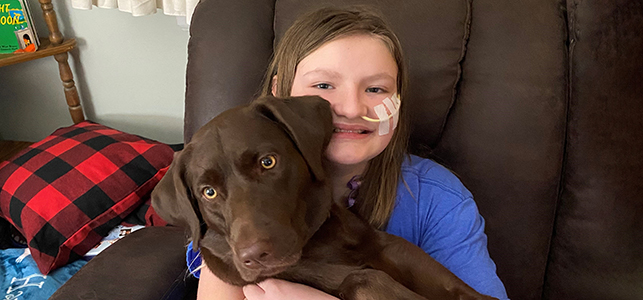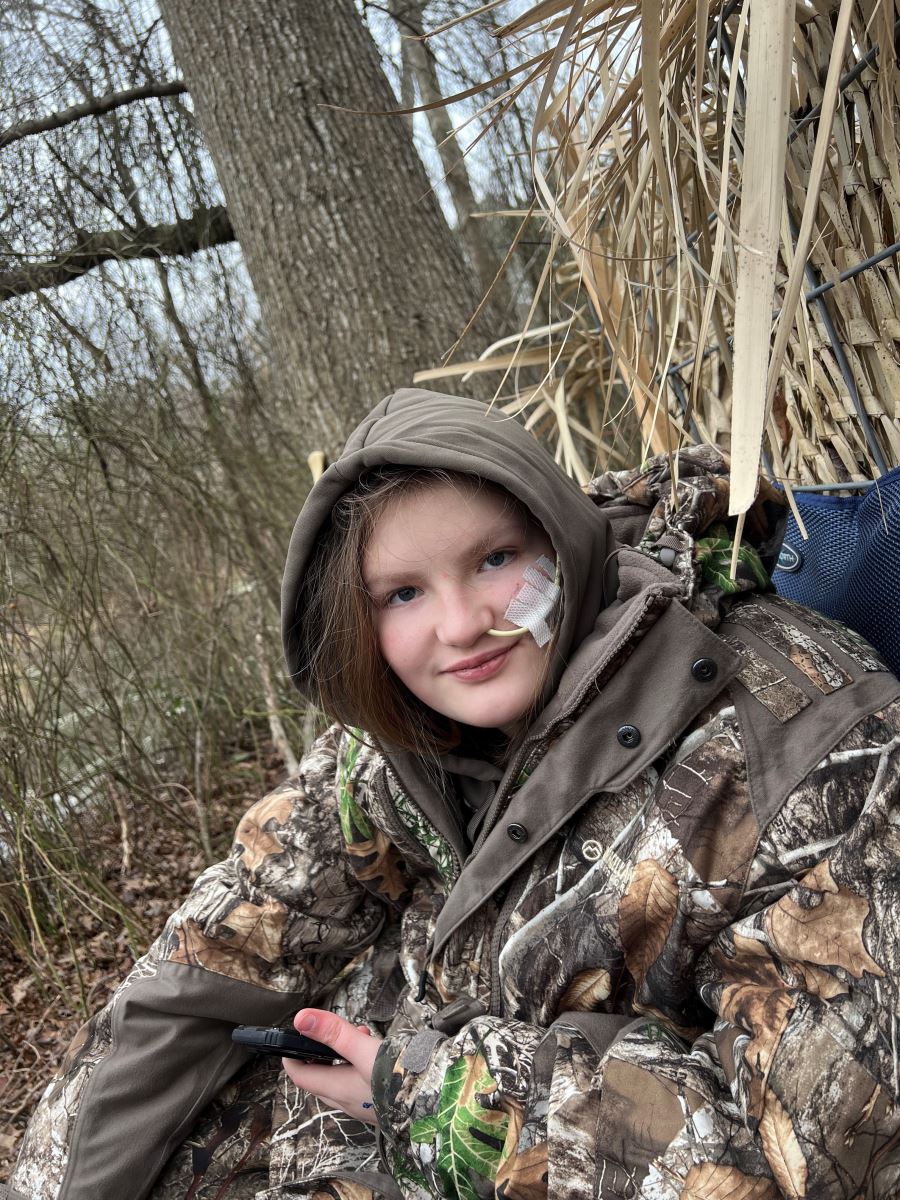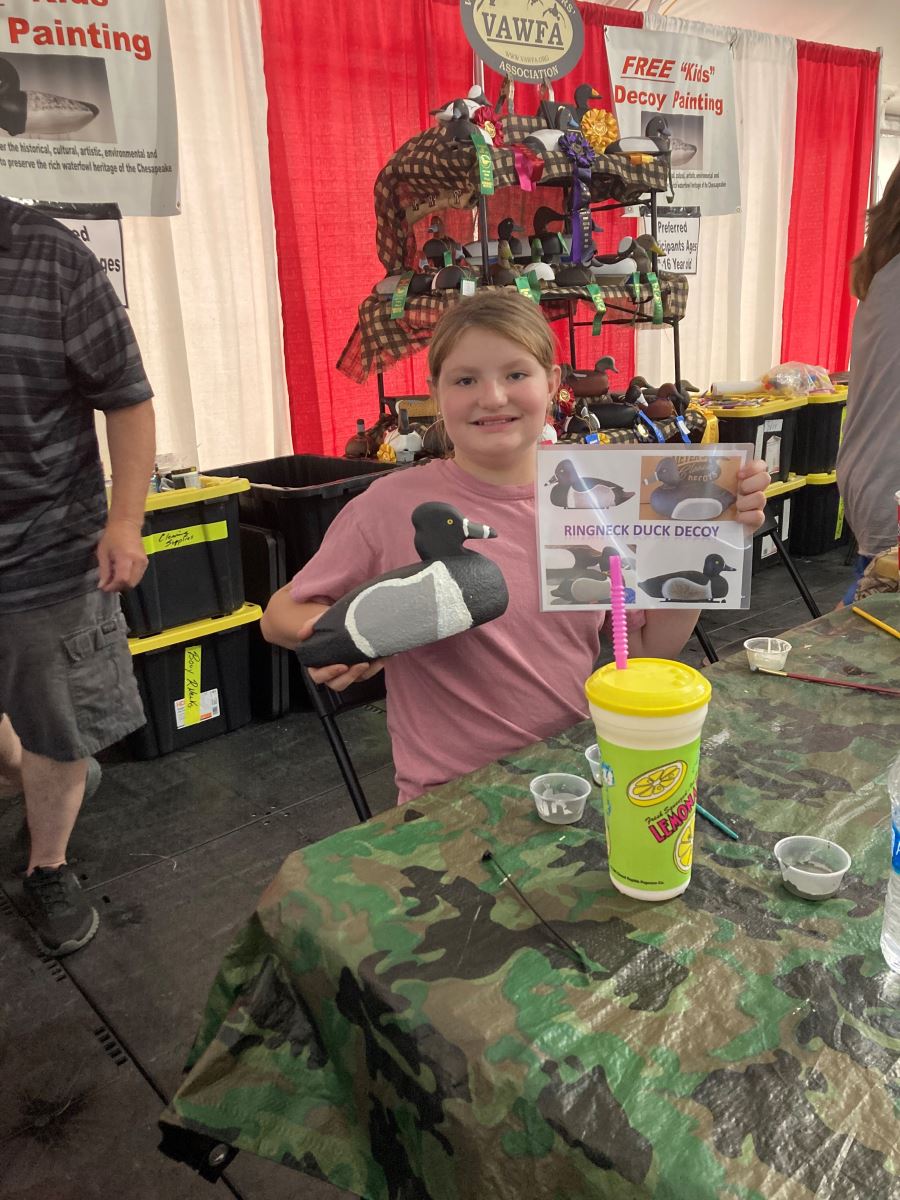
Morgan’s story: An uncommon pediatric diagnosis required unmatched teamwork
“It started in April 2022. All she could tell us was her stomach was hurting and the pain would come and go,” said Joey and Holly Gifford of their 11-year-old daughter, Morgan.
Morgan’s primary care physician thought she may be dealing with acid reflux and recommended antacid. By June, the pain would get worse for a week, then go away, in a cycle that continued for several months. The Giffords questioned whether or not it could be anxiety related, but the pain grew more frequent and intense as time went on.
“In late October, she came downstairs to go to school one morning doubled over in pain, then ran to the bathroom to throw up,” said Joey. “Now I’m really concerned. I said, ‘That’s it. We’re going to the ER.’”
Hunting for answers with health care specialists
Nothing was showing up in the x-rays or testing at the ER closest to the Giffords’ home. The provider considered the possibility of endometriosis and instructed them to follow up with an OBGYN who was able to get Morgan in for an ultrasound the following day.
As the tech conducted the ultrasound, Joey saw the color drain from her face. She quickly pulled the doctor from another room, who explained there was something questionable in the images and immediately ordered a CT. Joey and Holly were on pins and needles until they received her follow-up call the next evening.
“The CT shows a mass on Morgan’s pancreas. You need to go to a GI specialist,” she said.
The Giffords continued their search for answers, which weren’t coming quickly. The gastroenterologist didn’t like what he saw on the CT and called for an MRI and lab work. Based on Morgan’s high levels of lipase, an enzyme made by the pancreas to help the body digest fats, he diagnosed her with pancreatitis. More doctor visits led to a hospital admission at a community hospital, where Morgan stayed for three nights, still with no clear answers behind what the mass was and why it was causing so much pain.
On December 1, Morgan had yet another appointment. Afterward, the Giffords went shopping and out for dinner at Cracker Barrel, but Morgan could only eat a few bites. By that night, she was in agonizing pain, leading to another week in the hospital. This time, though, they got to the bottom of things.
An unexpected diagnosis, and the collaboration that followed
Further testing showed that Morgan was dealing with a solid pseudopapillary neoplasm – or tumor – of the pancreas with the potential of becoming cancerous. While not uncommon in young women, tumors of this type aren’t usually seen in kids as young as Morgan.
“At that point, the doctor said, ‘She’s going to have to go through the Whipple procedure,’” Joey recalled. “I don’t remember anything else he said. I don’t even remember saying goodbye when he left the room.”
The news was particularly difficult for Holly, whose mother died from pancreatic cancer after having the Whipple procedure.
“I was scared. I had all the emotions,” said Holly.
Dr. Claudio Oiticica came in to see Morgan and that’s when her journey with CHoR began. Our surgeons see pediatric patients at other hospitals throughout the region. Two days after Morgan’s diagnosis, Dr. Oiticica surgically placed a feeding tube so Morgan could receive adequate nourishment since the tumor made eating difficult. With the complexity of Morgan’s case, however, it was imperative that she receive her major surgery on our downtown medical center campus with the combined expertise of pediatric specialists and a surgeon experienced in the intricate procedure.
Dr. Oiticica arranged for home health care to help Morgan with her tube feedings. Morgan then followed up with him – along with our associate chief medical officer and another pediatric surgeon, Dr. David Lanning. Because this procedure is so rare in kids, they also pulled in their colleague Dr. Leopoldo Fernandez, surgical oncologist at VCU Health.
“A tumor in the head of the pancreas requires a pancreaticoduodenectomy, more commonly called the Whipple procedure,” said Dr. Fernandez. “The head of the pancreas is in a complex area with multiple blood vessels and veins that perfuse the bowel and liver, and is where the pancreas, bile duct (coming from the liver) and pancreas connect. To remove the head of pancreas requires removing the duodenum where the bile duct and the pancreas duct drain into the bowel, then reconnecting the stomach, pancreas and bile duct again to the small bowel. This isn’t the type of surgery you can do only once in a while with great accuracy and success.”
The right place for the complex Whipple procedure
 The three doctors talked with Morgan and her parents. While Joey and Holly asked questions about the upcoming surgery, Morgan had something else on her mind.
The three doctors talked with Morgan and her parents. While Joey and Holly asked questions about the upcoming surgery, Morgan had something else on her mind.
She asked, “Can I still go duck hunting with my feeding tube?”
The docs looked at her in disbelief for a moment, then agreed – yes. They told her she needed to time her hunting around her tube feedings, which took place every five hours. They also recommended she get as much of her favorite pastime in as she could because she’d be down for a while after surgery.
Morgan followed her doctors’ extraordinary advice. On January 22, 2023, she was hunting and on January 23 she was one of the youngest patients to undergo the Whipple procedure at CHoR and VCU Health. Siri Garrett, child life specialist, was an essential member of Morgan’s care team, helping her prepare for surgery.
"It's not uncommon to feel nervous before surgery, especially one as intense as what Morgan was going to experience. Working with Morgan and her family to make sure they felt prepared and supported was crucial,” said Siri. “Spending the time to talk with Morgan and hear from her about what she was most nervous about, what she was most excited about, and what she felt was important for the team to know about her, gave Morgan a chance to feel heard. Morgan really took charge of how she went to surgery, what music she wanted to listen to on the way to the OR and who she wanted to accompany her on her way there. Giving her, and all of our patients, as much ownership and agency in their care as safely possible not only empowers them but gives them confidence and hope."
Dr. Fernandez performed the 7-hour surgery with Dr. Lanning in the operating room for support. Following surgery, Morgan went to our pediatric intensive care unit to begin her recovery.
“When we got to the room, Siri had put up fairy lights and decorations,” said Holly.
It’s another one of the special touches that make children’s hospitals the perfect place for kids.
"I've always made an effort to give our patients' rooms a more personal touch to make the room less intimidating and less like a hospital room. Even if it's just a cuddly stuffed animal or soft fleece blanket, going that extra step to make our patients feel like this is a safe place focused on them can hopefully make a positive difference in their experience,” Siri added.
To everyone’s delight, Morgan didn’t need to stay in her PICU room long. By the following evening she was allowed to eat her first solid food by mouth in more than two months – potato chips and gummy bears! She moved to the acute care floor the next night and was able to go home shortly afterward.
“About a year ago, we became one of the few health care providers to do this procedure in a minimally-invasive, robotic-assisted manner,” explained Dr. Fernandez. “Many places still do it open, but the minimally-invasive approach allows for reduced pain and a safer, more efficient recovery, especially for a child.”
Shooting for the stars following an impressive recovery
While a typical hospital stay following an open Whipple procedure is 5-7 days, Morgan was recovering at home in three – and hunting again in a week – though it took a bit longer to get back to doing cartwheels. She continued her schoolwork at home for a couple weeks so she wouldn’t catch any stomach bugs that could cause serious complications. She’s been back at school for several months now with no pain.
 “Morgan’s tumor was completely resected, and she doesn’t need any further treatment,” said Dr. Lanning. “Her situation is a fantastic demonstration of how we can partner with our adult colleagues in the medical center to provide exceptional care in exceptional circumstances.”
“Morgan’s tumor was completely resected, and she doesn’t need any further treatment,” said Dr. Lanning. “Her situation is a fantastic demonstration of how we can partner with our adult colleagues in the medical center to provide exceptional care in exceptional circumstances.”
Since her surgery, Morgan has started a 4H compound bow shooting club and petitioned her school to join the Virginia State High School Clay Target League for skeet shooting. She’s competing at the high school level as a sixth grader.
“Obviously we wish Morgan didn’t have to go through all of this, but I can’t say one bad thing about our experience. Everyone was professional and caring through the whole process,” said Joey with gratitude. “Everybody – and I mean everybody, nurses, doctors, cleaning people, cafeteria staff – was phenomenal.”
